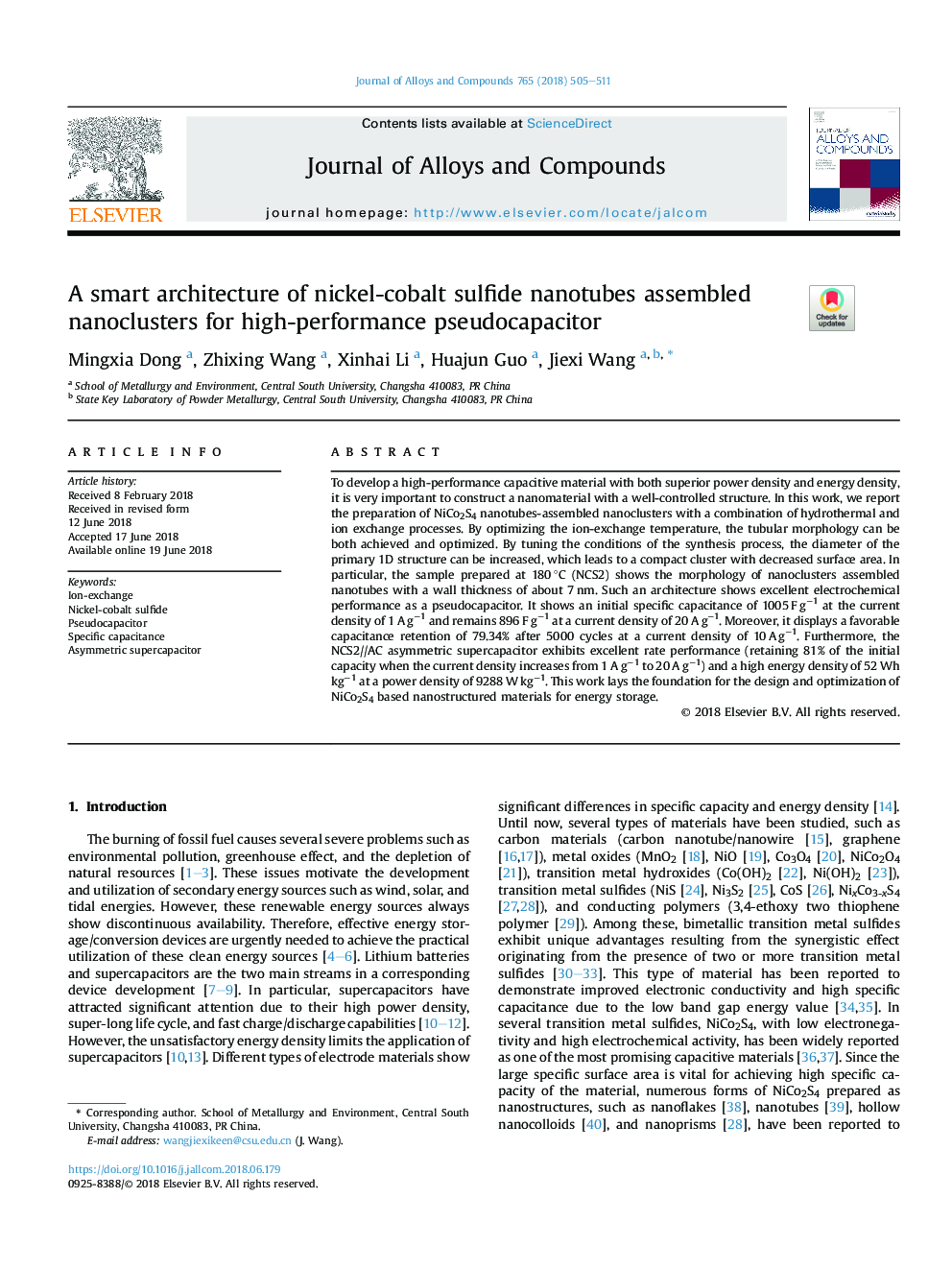| Article ID | Journal | Published Year | Pages | File Type |
|---|---|---|---|---|
| 7990541 | Journal of Alloys and Compounds | 2018 | 7 Pages |
Abstract
To develop a high-performance capacitive material with both superior power density and energy density, it is very important to construct a nanomaterial with a well-controlled structure. In this work, we report the preparation of NiCo2S4 nanotubes-assembled nanoclusters with a combination of hydrothermal and ion exchange processes. By optimizing the ion-exchange temperature, the tubular morphology can be both achieved and optimized. By tuning the conditions of the synthesis process, the diameter of the primary 1D structure can be increased, which leads to a compact cluster with decreased surface area. In particular, the sample prepared at 180â¯Â°C (NCS2) shows the morphology of nanoclusters assembled nanotubes with a wall thickness of about 7â¯nm. Such an architecture shows excellent electrochemical performance as a pseudocapacitor. It shows an initial specific capacitance of 1005â¯Fâ¯gâ1 at the current density of 1â¯Aâ¯gâ1 and remains 896â¯Fâ¯gâ1 at a current density of 20â¯Aâ¯gâ1. Moreover, it displays a favorable capacitance retention of 79.34% after 5000 cycles at a current density of 10â¯Aâ¯gâ1. Furthermore, the NCS2//AC asymmetric supercapacitor exhibits excellent rate performance (retaining 81% of the initial capacity when the current density increases from 1â¯Aâ¯gâ1 to 20â¯Aâ¯gâ1) and a high energy density of 52â¯Wh kgâ1 at a power density of 9288â¯Wâ¯kgâ1. This work lays the foundation for the design and optimization of NiCo2S4 based nanostructured materials for energy storage.
Keywords
Related Topics
Physical Sciences and Engineering
Materials Science
Metals and Alloys
Authors
Mingxia Dong, Zhixing Wang, Xinhai Li, Huajun Guo, Jiexi Wang,
